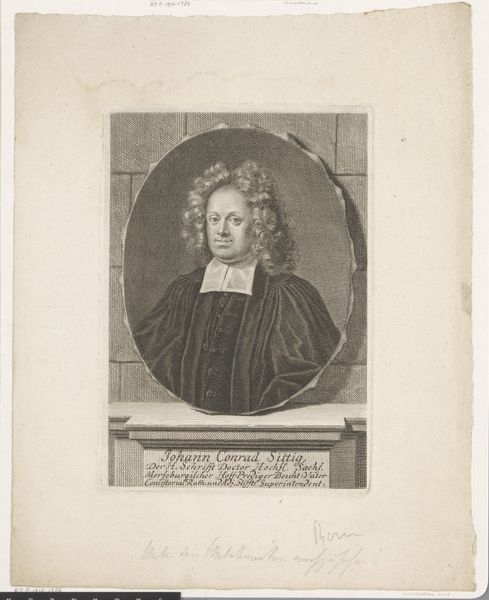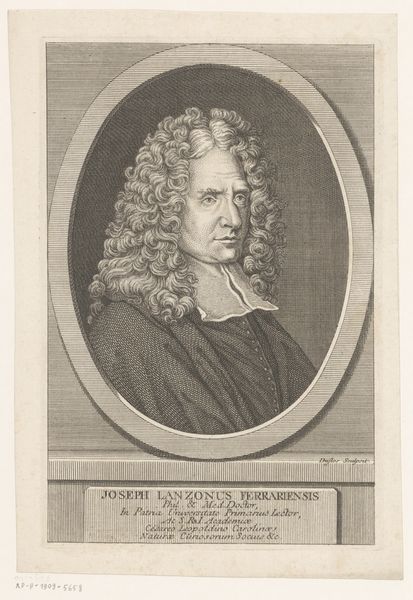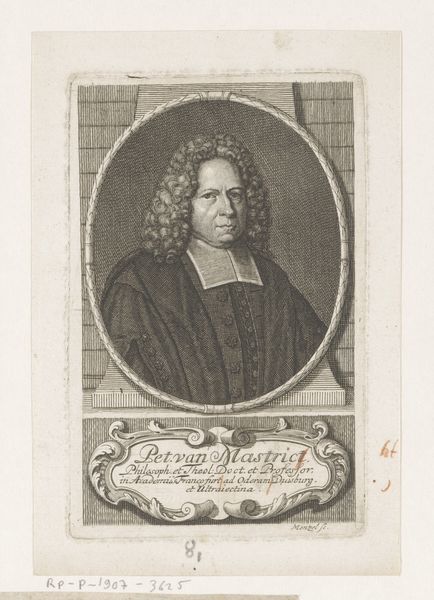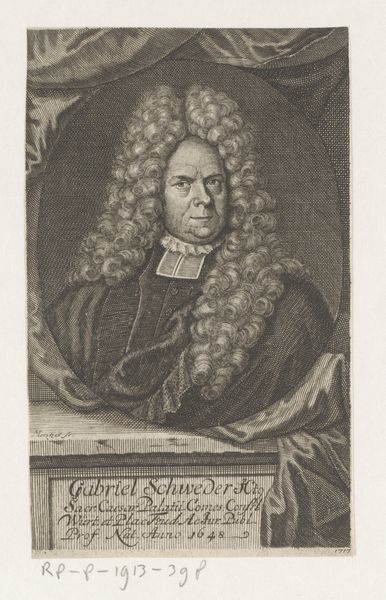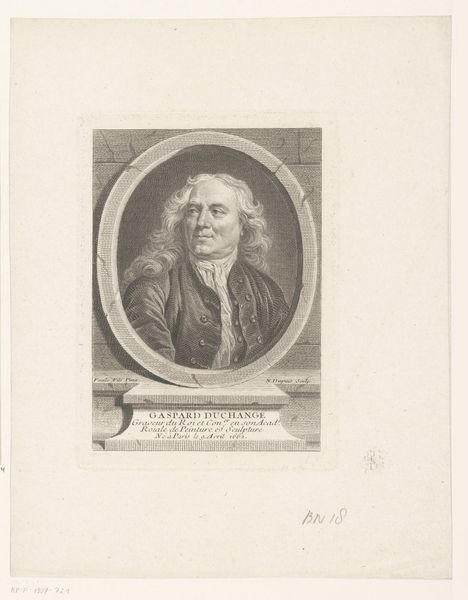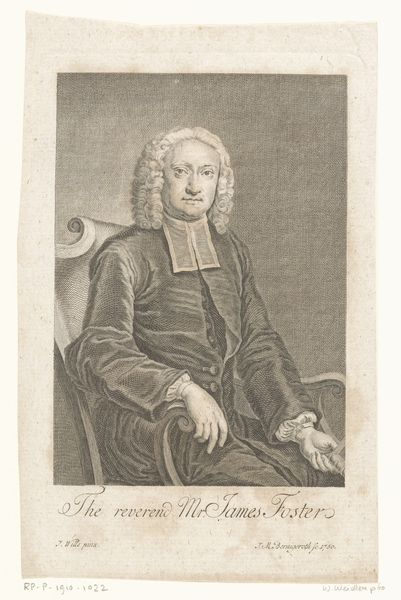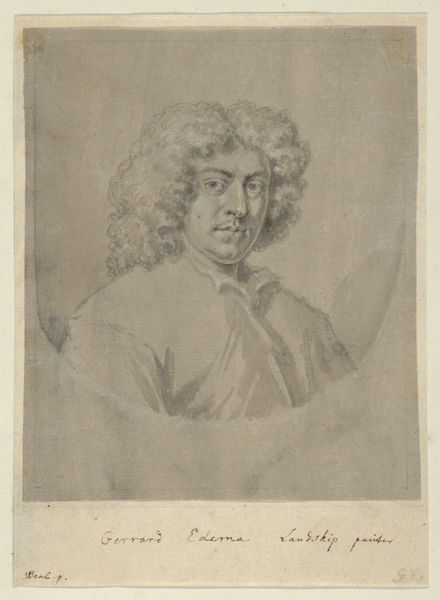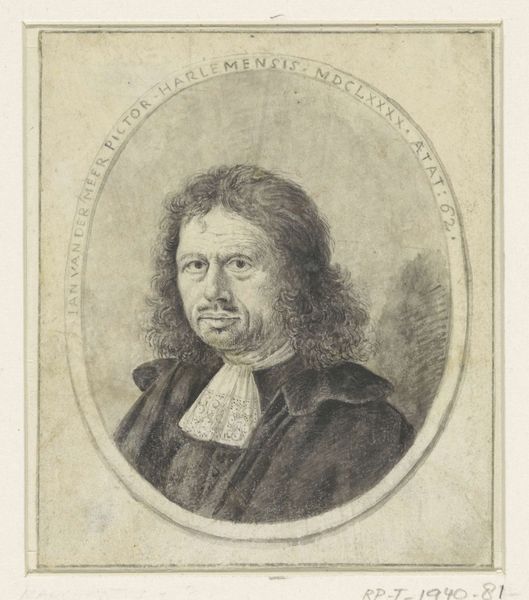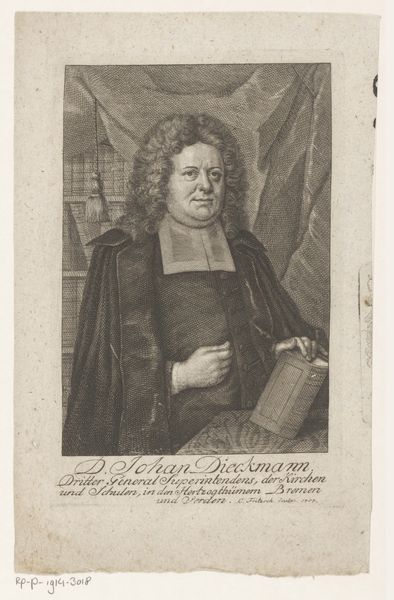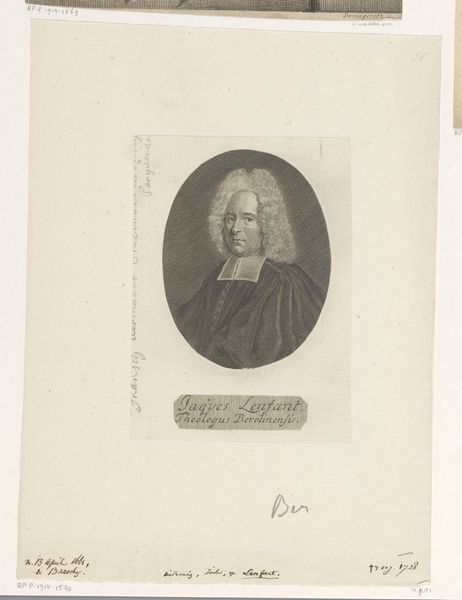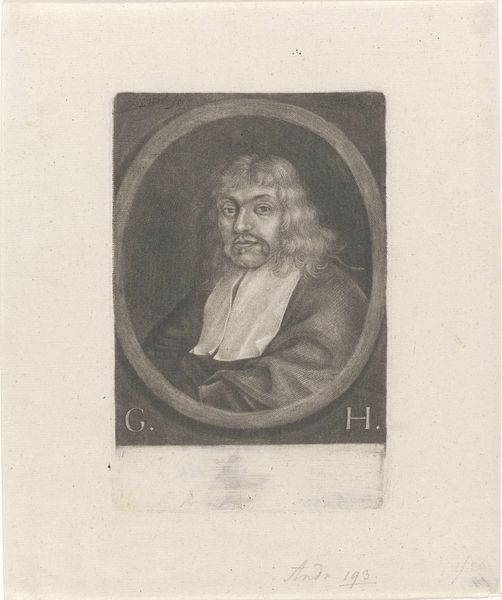
Dimensions: height 156 mm, width 116 mm
Copyright: Rijks Museum: Open Domain
Curator: This is a print dating from 1762 to 1782 entitled "Portret van Hermanus Boerhaave." The medium is engraving. Editor: The tonality strikes me immediately; there is a subdued lightness here, which offers an intimate character. The figure dominates, filling most of the frame, which suggests an aura of confidence, almost arrogance. Curator: Focusing on form, I'm intrigued by the layering of lines that define his robe and facial features. Notice how the artist uses hatching and cross-hatching to suggest volume, particularly around the face and upper torso. This creates a subtle Baroque sensibility. Editor: Looking at Hermanus Boerhaave himself, beyond the visual, who was he? Boerhaave was a celebrated physician, humanist, and botanist whose teachings impacted medical knowledge well into the 18th century. It feels important to remember such figures not in isolation, but also, in the wider context of global developments around Enlightenment science. Curator: Undoubtedly, it's compelling how an engraving can convey such texture. Boerhaave's wig, with its loose, flowing strands, has a different pattern language in the strokes than, say, his coat. Do you think such details contribute to the figure's sense of immediacy and lively personality? Editor: Consider how dress and adornment during this period functioned as symbols of power and status. Here, the severe lines of the coat contrast nicely with the ostentation of the hair, offering a glimpse into his personal aesthetic preferences. The balance strikes me as distinctly human. Curator: This focus on the individual, within structured frameworks of representation is common to the era of baroque and nascent portraiture, where psychological and emotional qualities begin to enter artistic consideration. The visual weight given to the individual and his character. The artist uses tonal gradation to invite closer inspection of expression through nuanced formal arrangement. Editor: A pertinent consideration, the artist gives space for Boerhaave’s individual expression—humanizing the portrait, while revealing him not just as a medical authority, but as an active part of larger historical structures around humanism and philosophy of the era. It gives him historical dynamism. Curator: So it does... It all becomes such a potent mix. Thank you for pointing this out! Editor: Thank you for calling attention to the more understated virtues in form.
Comments
No comments
Be the first to comment and join the conversation on the ultimate creative platform.
